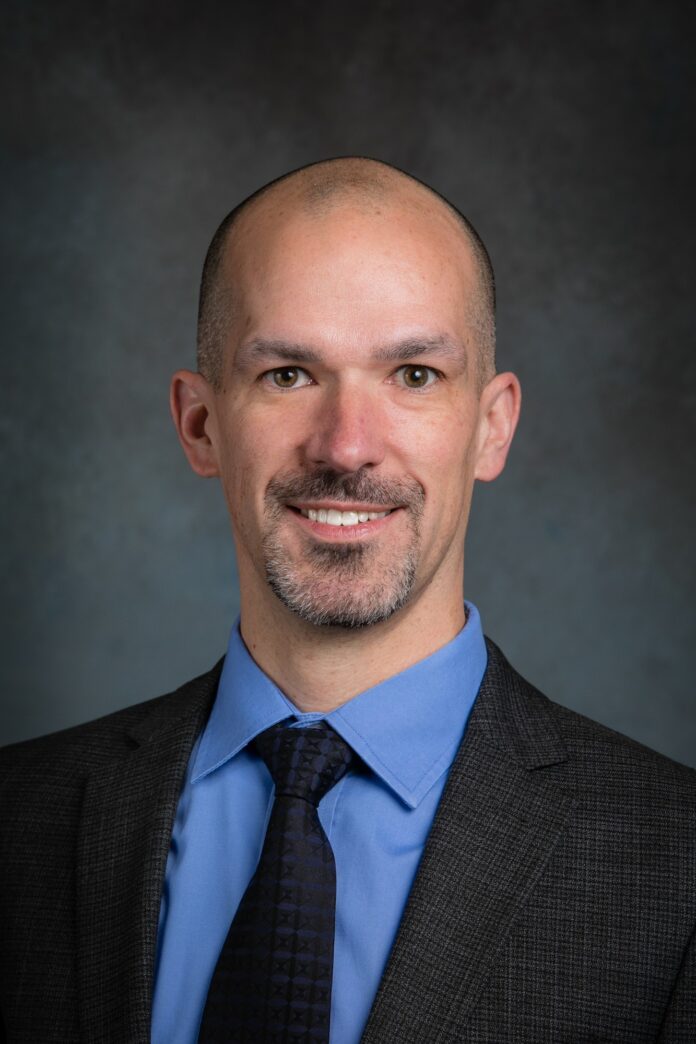
By Piper Rutherford | Staff Writer
Baylor’s doctor of physical therapy program is a two-year hybrid study, which gives aspiring physical therapists from all over the country the chance to conduct labs with real patients from the Waco community.
Dr. Kyle Adams, chair of admissions for the program, said the program first began in 2018 with 100 students each calendar year.
“What is special about this doctoral program is that it allows for half of our students to live outside of Texas, since the only time they need to be on Baylor’s campus is for our six different labs throughout the year,” Adams said. “We like to think that the labs are the secret sauce of our program.”
As for the labs, Adams said students apply what they learn during their virtual module instructions — such as a course on human anatomy where they study the spine and lower extremity content — and then have the opportunity to work with cadavers in the lab in Waco.
“Within physical therapy examination, our goal is to teach students about body mechanics,” Adams said. “This pertains to bed positioning and transfers, muscle testing for strength, as well as neurological testing.”
Dr. Jessica Feda, clinical assistant professor and graduate of Baylor’s military physical therapy program, said the doctor of physical therapy program first sparked her interest after a colleague said that even though it is hybrid, the connection between students and professors is stronger than in any other program.
“When we come to campus, there is something electric in the air, and I know we are on the cusp of something great,” Feda said. “It is intentional how the program is a community of inquiry where the community strengthens the content, and the hybrid aspect is not isolating for students.”
When comparing her experience in the military physical therapy program to that of the doctor of physical therapy program, Feda said that although she had in-person instruction and a small class size, the two programs still share many commonalities.
“In mine, we had 19 students in the class, and we were in the classroom together from 7 a.m. to 4:30 p.m. every day, so we naturally created a strong bond together,” Feda said. “Now, in the DPT program, even though we average about 100 students at a time and that it takes place both online and in person, my students still form those lifelong friendships with ease.”
For students who are interested in pursuing a career in physical therapy, Adams said he likes to think of physical therapists as the jacks of all trades in the medical field.
“Physical therapists work head to toe,” Adams said. “We get to work with patients through every stage of their recovery, whether that includes working with patients using a walker in a hospital setting or helping patients adapt to tackling daily activities at home during their recovery, such as getting themselves dressed or making themselves meals.”
Adams said good characteristics of a physical therapist are sympathy, compassion, communication and relationship-building skills — traits the program looks for when admitting applicants.
“We also want to know how you, as an individual, apply physical therapist skills outside of the classroom,” Adams said. “For instance, I remember one applicant wrote about working at an ice cream shop and talked about how she would handle a situation with empathy when young kids would drop their ice cream cones and start crying to their parents, which demonstrated her capacity for taking care of others.”
Similarly, Feda said that while physical therapy requires a mindset to work, the field is growing and has never felt like a job to her.
“A Confucius teaching once said that if you are passionate about what you do, you will never feel like you have worked a day in your life,” Feda said. “I do not feel with this career that I have worked a day in my life, since I love working with patients as we strive to achieve their physical goals and improve their quality of life.”




